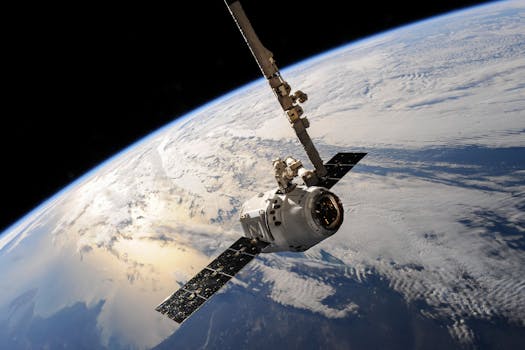
The Future of Satellites: Revolutionizing Global Connectivity
The future of satellites is poised to revolutionize global connectivity, enabling faster and more reliable communication, navigation, and remote sensing. With the increasing demand for satellite-based services, the industry is experiencing a significant transformation, driven by advances in technology, decreasing costs, and innovative business models. In this article, we will explore the current state of the satellite industry, emerging trends, and the potential impact on global connectivity.
Focus Keyword: The future of satellites is rapidly evolving, with new technologies and initiatives being developed to enhance the capabilities of satellite-based systems. From improved propulsion systems to advanced materials and designs, the next generation of satellites is being designed to be more efficient, sustainable, and cost-effective. For instance, the use of electric propulsion systems is becoming increasingly popular, as they offer greater fuel efficiency and longer mission durations. Additionally, the development of new materials and designs, such as inflatable spacecraft and modular satellites, is enabling the creation of more versatile and adaptable satellite systems.
Current State of the Satellite Industry
The satellite industry has experienced significant growth over the past few decades, with the number of satellites in orbit increasing from just a few hundred in the 1990s to over 5,000 today. This growth has been driven by a range of factors, including the increasing demand for satellite-based services, such as telecommunications, navigation, and remote sensing. The industry has also seen significant investment in recent years, with billions of dollars being poured into the development of new satellite constellations, such as OneWeb and SpaceX’s Starlink. These constellations are designed to provide global coverage, enabling fast and reliable communication, navigation, and remote sensing services.
The current state of the satellite industry is characterized by a high level of competition, with numerous companies and organizations operating in the market. The industry is also subject to a range of regulatory frameworks, which can vary significantly from one country to another. Despite these challenges, the satellite industry continues to evolve and innovate, with new technologies and initiatives being developed to enhance the capabilities of satellite-based systems. For example, the use of artificial intelligence and machine learning is becoming increasingly popular in the satellite industry, as it enables the creation of more sophisticated and autonomous satellite systems.
Emerging Trends in the Satellite Industry
There are several emerging trends in the satellite industry that are likely to shape the future of global connectivity. One of the most significant trends is the development of new satellite constellations, such as OneWeb and SpaceX’s Starlink. These constellations are designed to provide global coverage, enabling fast and reliable communication, navigation, and remote sensing services. Another trend is the increasing use of small satellites, which are smaller, cheaper, and more agile than traditional satellites. Small satellites are being used for a range of applications, including Earth observation, communications, and technology demonstration.
The use of satellite-based services is also becoming increasingly popular, with a range of industries, including aviation, maritime, and land transportation, relying on satellite-based navigation and communication systems. The development of new satellite-based services, such as satellite-based internet and satellite-based Earth observation, is also expected to drive growth in the industry. For instance, satellite-based internet services, such as those offered by OneWeb and SpaceX, are designed to provide fast and reliable internet connectivity to remote and underserved communities.
Impact on Global Connectivity
The future of satellites is likely to have a significant impact on global connectivity, enabling faster and more reliable communication, navigation, and remote sensing. The development of new satellite constellations and the increasing use of small satellites are expected to drive growth in the industry, enabling the creation of more sophisticated and autonomous satellite systems. The use of satellite-based services is also expected to become increasingly popular, with a range of industries relying on satellite-based navigation and communication systems.
The impact of the future of satellites on global connectivity will be significant, enabling the creation of more connected and interconnected communities. The development of new satellite-based services, such as satellite-based internet and satellite-based Earth observation, will also drive growth in the industry, enabling the creation of more sophisticated and autonomous satellite systems. As the satellite industry continues to evolve and innovate, it is likely that we will see significant advances in global connectivity, enabling faster and more reliable communication, navigation, and remote sensing.
Conclusion
In conclusion, the future of satellites is poised to revolutionize global connectivity, enabling faster and more reliable communication, navigation, and remote sensing. The current state of the satellite industry is characterized by a high level of competition and innovation, with numerous companies and organizations operating in the market. Emerging trends, such as the development of new satellite constellations and the increasing use of small satellites, are likely to shape the future of global connectivity, enabling the creation of more sophisticated and autonomous satellite systems. As the satellite industry continues to evolve and innovate, it is likely that we will see significant advances in global connectivity, enabling the creation of more connected and interconnected communities.



